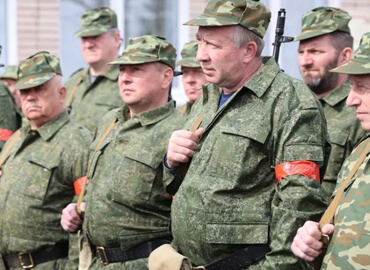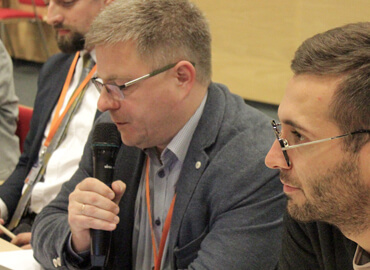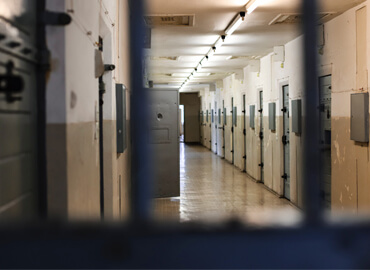Belarusian dictator Alexander Lukashenko’s fraudulent claims of victory in last August’s presidential election triggered massive protests across the country. After 26 years of miserable ineptitude, repression, poverty, and corruption under Lukashenko, the citizens of Belarus had enough.
The authorities’ response to the protests in Belarus was brutal. According to the Office of the United Nations High Commissioner for Human Rights, more than 27,000 people have been detained and arrested since last August. Hundreds have been beaten and tortured, and several lost their lives. Journalists have been especially targeted by authorities, leading Reporters Without Borders to declare Belarus the most dangerous country in Europe for media reporters in 2020.
The protesters in Belarus were overwhelmingly peaceful. But because of their size and persistence over many months, Lukashenko appears to have panicked and responded in the only way he knows: by ordering his thuggish security forces to do everything necessary to put them down.
The security services—still known in Belarus by their Soviet-era acronym, KGB—are Lukashenko’s only hope for staying in power. But this relic of the era when Belarus was ruled from Moscow isn’t the only connection between Lukashenko’s violent crackdown and his country’s former Russian masters. An investigation by BYPOL, a network of dissident former officers from the Belarusian security services and criminal justice system, has documented widespread use of Russian weapons and ammunition used by Lukashenko’s forces to put down the protests. This includes many weapons with lethal military capabilities whose use on civilians violates international human rights standards.
Reports from Belarusian medical facilities support these findings. In Minsk between Aug. 9 and 22 alone, 1,141 people with protest-related injuries sought medical help. Of those, 64 had wounds from military-grade explosives; 45 arrived with gunshot wounds. There is also evidence that security forces beat and tortured detainees, including with the use of Russian-styled weapons. Many of those detained revealed evidence of torture and illegal use of weapons. Videos of their scars and injuries have provoked outrage around the world.
BYPOL — which stands for Belarus police and whose formal name is Solidarity Association of Belarusian Law Enforcement Personnel — is an investigative group of former personnel from security services, border troops, and the state prosecutor’s office who quit in response to the violent crackdown against pro-democracy protesters and are collecting evidence of abuses committed by the Belarusian authorities. They have also obtained a recording where Deputy Minister of Internal Affairs Nikolai Karpenkov calls on security forces to «use your weapon and shoot [the protester] right in the forehead, right in the face».
Since last August, BYPOL has tracked photos of weapons, spent ammunition, and injuries to protesters posted on the internet. Based on this evidence, in addition to first-hand testimony and information provided by sources still inside the Belarusian security agencies, BYPOL concluded that the following weapons and ammunition were used against the protesters during the demonstrations:
- GM-94 grenade launcher made in Tula, Russia by the KBP Instrument Design Bureau. Its main purpose is to provide fire support for infantry in close-combat conditions, especially in urban environments, as well as use by special police operations to destroy lightly armored vehicles and to create smoke screens and fires.
- Various models of the Russian-made PK Kalashnikov machine gun were seen among security forces.
- Saiga-12K semiautomatic rifle, manufactured in Russia and similar to the Kalashnikov.
- MP-353 pistol for firing rubber bullets that can be dangerous at close range. This is the weapon Karpenkov told security forces to fire in a protester’s face in the recording.
- VGM93.200 grenade rounds with a thermobaric charge, which the Russian arms export agency Rosoboronexport describes as «designed to counter terrorists and their means of transportation in urban conditions.» These were used in August 2020 in Minsk.
- VGM93.400 grenade rounds described by Rosoboronexport as «designed to produce a psychophysical and a flash/bang effect on offenders,» reportedly used in Minsk.
- VGM93.600 grenade rounds with strike-stun action designed to physically neutralize protesters, also reportedly used in Minsk.
- Various spent cartridges and ammunition found at the scene of protests, including many made in Russia by the firm Izhevsk Techkhrim.
Most of these weapons are meant for military purposes, including the suppression of serious civil strife or terrorist attacks, and are rarely deployed for normal crowd control.
In the recording obtained by BYPOL, Karpenkov also spoke about building camps for political prisoners. He said Lukashenko authorized brutal measures against protesting citizens. «Head of state covers us from all angles in terms of using firearms,» Karpenkov said in the recording. «Shoot away with all you’ve got.»
It should not be a surprise that a number of the weapons used against peaceful protesters were supplied by Russia. According to the BYPOL network, roughly 90 percent of the weapons and ammunition for the Belarusian domestic security services are Russian supplied, much of it in recent years under Russian President Vladimir Putin. We also know that Russian security services trained their Belarusian counterparts in weapons use. Russia’s head of foreign intelligence, Sergey Naryshkin, visited Minsk several times following the protests in August 2020. All this makes the Putin regime complicit in the abuses in Belarus.
Before even more innocent Belarusian pro-democracy protesters are maimed or killed, there must be an immediate halt to the brutal crackdown. A thorough and independent investigation is necessary to look into the use of near-lethal weapons and ammunition, their origin, and those who authorized their illegal use. Lukashenko blames outside forces for the protests against his rule, but in reality, the only outside player complicit in the violent suppression of peaceful citizens is Putin’s Russia.
Vlad Kobets is the executive director of the International Strategic Action Network for Security.
David J. Kramer is the director of European and Eurasian studies and a senior fellow at the Vaclav Havel Program on Human Rights and Diplomacy at Florida International University’s Steven J. Green School of International and Public Affairs and a former assistant secretary of state for democracy, human rights, and labor.
This article is also available on Foreignpolicy.com










